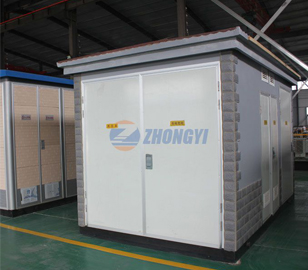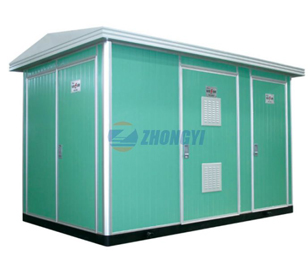Aug. 09, 2021
The global substation market size exceeds USD 151 billion in 2019 and is expected to exceed 24,500 installations annually by 2026. The regional inclination towards the adoption of renewable power infrastructure and electrification of off-grid networks is injecting a commendable growth scenario in the global market.
A substation is an interface in a power network where distribution feeders and transmission lines are connected together by transformers and busbars via switches or circuit breakers. This allows control of power flow across the network and general switching operations for maintenance purposes. These fenced areas primarily reduce or raise the voltage in the transmission lines to a specific level suitable for the distribution system.

Prefabricated Substation
Primary grid substations
Secondary substations
Boost substations
Distribution substations
For better understanding, the above types of substations are further explained below.
The primary substation is the core of her transmission network and is stepped down or lowered from the substation to 66 kV with a voltage increase of 220 kV (these voltage levels may also vary by country/region and by different service providers). The 220 kV three-phase transmission is mostly in three-wire transmission towers, and the primary grid-connected substations are mostly outdoor types.
Primary substations are located throughout the country by connecting transmission networks. The main purpose of the transformers located in the primary grid substations is to distribute the power supply in that peticlura area.
Most secondary substations are located in strategic areas at the city boundaries. In this secondary substation, what happens is that the 33 kV power transmitted from the primary substation is further stepped down to 11 kV so that this voltage level can be efficiently distributed to other areas.

Prefabricated Substation
Sometimes, due to the huge power demand, large industrial companies and high-rise buildings get this power feed directly. Most secondary substations are of the indoor type. The power supply to the secondary substation transformer usually comes from the grid substation and then feeds the distribution substation.
These types of substations can be found in power stations where the main purpose of this type of substation is to increase the voltage level. Thus, the generation voltage of 11 kV is increased to 220 kV or 132 kV to match the transmission grid.
Boosted substations are generally of the outdoor type and are located inside or near the power plant. Boosting implies an increase, so in this type of transformer, the voltage is increased to reduce losses in long transmission lines. Most step-up transformers are located near the power plant and it helps to provide supply and transmission.
Distribution substations are located where the primary distribution voltages are stepped down. These voltages are used by consumers for actual loads. These substations have high voltage withstand wires and conductors, where one neutral is grounded and four fire wires. The voltage between conductor and wire is 34,500 volts in three phases and approximately 19,920 volts in a single phase when it is considered neutral to ground and conductor.
Depending on the type/configuration of the equipment used, substations can be classified as
Conventional - outdoor type with air-insulated equipment
Indoor type with air-insulated equipment
SF6 gas insulated substations
Outdoor type with gas insulated equipment
Indoor type with gas insulated equipment
Composite substations or a combination of both of the above
Let us help you find the best substation for your needs. Contact us today or visit our website to learn more about substations.
Contact Us
Contact us. Together with us, inspire boundless creativity
NAVIGATION
Tel: +86 312 5880165
Mob: +86 135 1322 2010
Fax: +86 312 5880165
E-mail: gracejia@zydqjt.com
Skype: +86 135 1322 2010
WhatsApp: +86 135 1322 2010
Wechat: +86 135 1322 2010
FOLLOW US
Add: Room A1109, No.483 Yulan Street, Baoding City, Hebei Province, China
